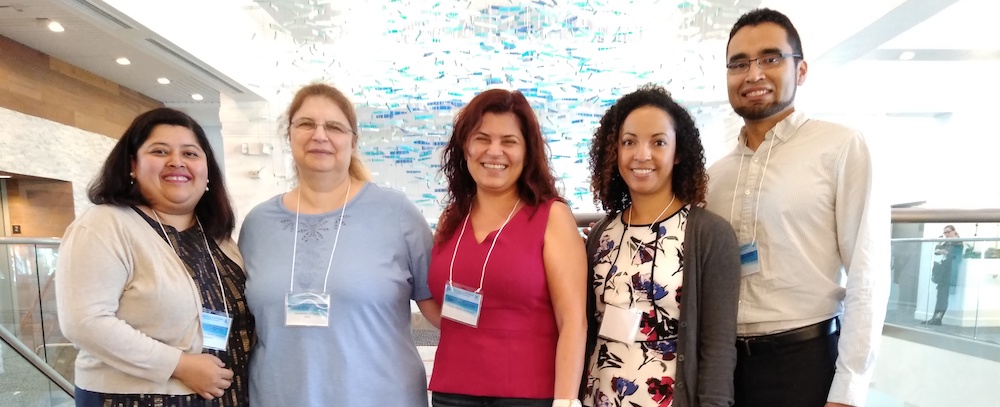
The Fifth Conference on Computational and Mathematical Population Dynamics (CMPD5) took place at the Bahia Mar hotel in Ft. Lauderdale, FL, USA, from May 19 to May 25, 2019. This international conference was attended by more than 200 participants from 17 countries. More than 90 participants were graduate students, post-docs or young faculty up to 5 years past PhD.
The conference featured 9 plenary talks: Plenary speaker Susan Lenhart (University of Tennessee, Knoxville, USA) opened the conference with the talk Investigating two datadriven models with mosquito-borne diseases. She was followed by Marco Tulio-Angulo (UNAM, Mexico) with the talk Controlling complex microbial communities. On Tuesday, the days was open by Linda J.S Allen (Texas Tech University, USA) The impact of demographic and environmental variability on disease emergence in stochastic epidemic models. She was followed in the afternoon by Joydev Chattopadhayay (Indian Statistical Institute, India) with the talk Understanding dengue transmission dynamics through mathematical models. Sebastien Lion (Centre d’Ecologie Fonctionnelle et Evolutive, CNRS,France) gave the morning plenary talk on Wednesday with the talk Evolution in structured populations. He was followed in the afternoon by Rebecca Tyson (University of British Columbia Okanagen, Canada) with the talk Rethinking the predator-prey relationship.
Thursday also featured two plenary talks. In the morning Maia Martcheva (University of Florida, USA) spoke about Modeling Zika, while in the afternoon Nicolas Bacaer (Institut de recherche pour le developpement, France) spoke about Some population models in varying environments. Shigui Ruan (University of Miami, USA), selected not only for his outstanding scientific accomplishments but also for his contribution to the organization of CMPD4, spoke on Friday morning about Modeling the transmission dynamics of the antibiotic resistant bacteria.
CMPD5 featured more than 180 mini-session talks in 49 sessions. Session topics included gene regulation and molecular biology, effects of Wolbachia on insect population dynamics, stochastic models of gene expression, population game dynamics, climate change and vector borne diseases, modeling of infectious diseases, influence of heterogeneity in disease dynamics and control, adaptive dynamics, spatial dynamics in population biology, immune modeling, modeling antibiotic-resistance bacteria, multiscale within-host models and epidemic models, control problems in population biology, modeling of cancer growth and treatment, viral dynamics and drug treatment, bifurcation theory and applications in biology, structured population dynamics, and some other related subjects in population dynamics. The mathematical tools involved autonomous and non-autonomous ordinary and partial differential equation, stochastic and discrete models, network models, optimal control theory and machine learning.
There was a reception on Monday evening coupled with a poster session of 11 posters. The reception lasted nearly 3 hours during which conference participants and poster presenters discussed vigorously various research topics, including vector-borne modeling, backward bifurcation in age-structured models, cancer modeling and treatment, and others. As part of the social program, the conference also featured a banquet on Wednesday evening.
The conference was generously supported by the NSF under grant DMS-1917506 which partially funded about 40 US-based young researchers to attend CMPD5. Furthermore, a grant for Society for Mathematical Biology made possible for some internationally based young researchers to attend the conference. The conference was generously supported by World Scientific, and will publish conference-related papers in a special issue of the Journal of Biological Systems and a topical volume focused on population dynamics. CMPD5 was supported and encouraged by Florida Atlantic University and University of Florida.
Maia Martcheva
Necibe Tuncer